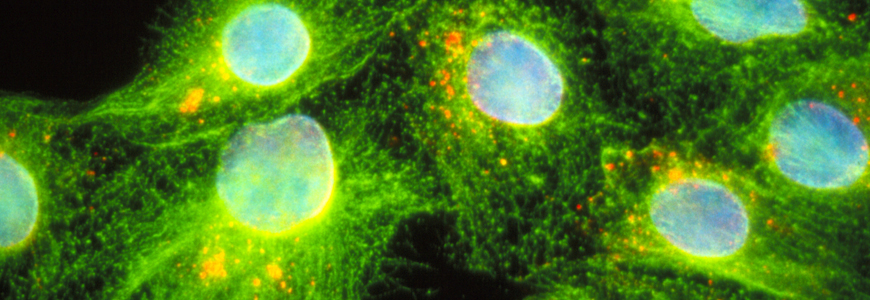Hormone therapies for prostate cancer have greatly prolonged the lives of patients, but the drugs eventually become ineffective and the disease grows lethal. Resistance occurs because a small percentage of prostate cancer cells are impervious to the therapies, and actually thrive when the drugs are used.
Targeting this subset of virulent cancer cells is the focus of a study led by Duke Cancer Institute researchers. The study, published in December 2019 in Science Translational Medicine, identified a cell surface receptor that is essential for the function and survival of resistant prostate cancer cells, and showed in laboratory studies that this receptor can be targeted to halt tumor growth. A clinical trial is underway using a drug originally intended for lung diseases.
“We noticed in prostate cancer there are two types of cells,” says senior author Jiaoti Huang, MD, PhD, chair of Duke’s Department of Pathology. “The vast majority are luminal tumor cells, which are susceptible to hormone therapy. But a minor component of cells are neuroendocrine cells, and they are very important. They do not express the androgen receptor, so they will survive hormonal therapy. Our hypothesis was that this minor population, because they have the ability to survive, contribute to tumor recurrence, and that’s exactly what we found.”
Huang and colleagues isolated the neuroendocrine cells from fresh human prostate cancer tissue. In early-stage prostate cancer, they constitute no more than 1% of all tumor cells, but their numbers are much larger in late-stage and metastatic disease, and they make up almost all of a particularly lethal form of prostate cancer called small cell neuroendocrine carcinoma.
Current prostate cancer treatments exclusively target the majority population of luminal tumor cells, and they do that well; however, not only do hormone therapies leave neuroendocrine tumor cells untouched, the researchers found, they actually enrich the neuroendocrine cell population.
This occurs because tumor growth is driven by a receptor on the surface of neuroendocrine cells called CXCR2, which creates the optimal environment for prostate tumor cells to proliferate and spread. CXCR2 is also expressed by immune cells and involved in inflammation, and a drug that inhibits its function is being developed for patients with chronic obstructive pulmonary disease (COPD).
Andrew Armstrong, MD, medical oncologist and Director of Research in the Duke Cancer Institute’s Center for Prostate and Urologic Cancers, was a co-author on the study. “A critical aspect of this research is the finding that targeting a rare population of neuroendocrine cells in prostate cancer may restore sensitivity to hormonal therapy, and that combining CXCR2 inhibitors with hormonal therapy provided improved outcomes in preclinical models over either approach alone,” he says.
Huang’s research team tested navarixin in laboratory and animal studies, demonstrating that it killed hormone-resistant tumors in combination with enzalutamide, where enzalutamide failed on its own.
“Because CXCR2 is ubiquitously expressed by neuroendocrine cells in prostate cancer of all stages, targeting CXCR2 may particularly benefit patients whose tumors are advanced, recurrent, and resistant to currently available therapies,” Huang says. “The real implications of our findings need to be tested in clinical settings to determine whether patients with advanced prostate cancer benefit from CXCR2 inhibition, alone or in combination with a hormone inhibitor.”
Armstrong adds: “These data suggest that clinical trials of jointly targeting the typical prostate cancer cells with hormonal therapy, plus the resistant neuroendocrine clones with CXCR2 inhibition, may improve outcomes in men with metastatic disease. These clinical trial approaches are now underway at Duke and elsewhere and further studies are now being planned.”
